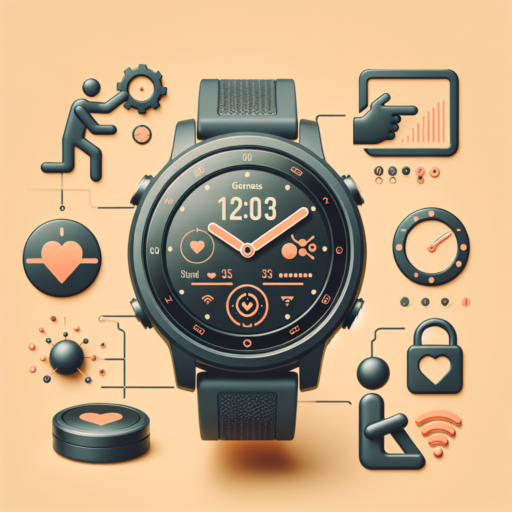No se han encontrado productos.
What do the numbers mean on a heart monitor?
When you glance at a heart monitor, whether it’s during a hospital stay, at a doctor’s visit, or while wearing a wearable fitness tracker, you see a series of numbers that might seem cryptic at first glance. These figures are crucial, offering a window into the heart’s functionality and overall health. Understanding these numbers can empower you with knowledge about your heart condition and your body’s state.
The primary number displayed on a heart monitor is the heart rate, measured in beats per minute (BPM). A typical resting heart rate for adults ranges between 60 and 100 BPM, although athletes and those with higher levels of physical fitness may have resting rates below this range. A heart rate significantly above or below this range might indicate underlying health issues or a need for medical attention.
Another critical figure on the monitor is the heart rhythm, representing the electrical activity of the heart. Normal heart rhythm, also known as sinus rhythm, indicates that the electrical impulses in your heart are occurring at regular intervals. Irregularities in these intervals, known as arrhythmias, can suggest a range of potential health concerns, from benign to serious conditions that may require immediate medical intervention.
What are the three readings on a heart monitor?
Understanding the readings on a heart monitor can be crucial for both medical professionals and patients monitoring their heart health. At its core, a heart monitor, often referred to as an electrocardiogram (ECG or EKG), provides a visual representation of the electrical activity of the heart. This is usually displayed as a line tracing on a screen or paper. There are three primary readings you’ll encounter on such a monitor: the P wave, the QRS complex, and the T wave. Each of these components offers vital information about the heart’s rhythm and function.
P Wave
The P wave represents the electrical activity related to the atrial depolarization, which is essentially the trigger for the atria (the upper chambers of the heart) to contract and push blood into the ventricles. A normal P wave is crucial as it indicates that the atria are contracting at a regular interval, which is essential for maintaining a steady and efficient heartbeat. Monitoring the P wave can help in diagnosing atrial fibrillation, a condition where the atria contract irregularly.
QRS Complex
The QRS complex is perhaps the most recognizable part of a heart monitor reading. It corresponds to the rapid depolarization of the right and left ventricles, which causes them to contract and pump blood out to the body and lungs. The QRS complex looks notably sharper and larger than the P wave on the monitor, reflecting the larger muscle mass of the ventricles compared to the atria. Anomalies in the QRS complex can indicate issues such as ventricular tachycardia or evidence of a previous heart attack.
T Wave
The T wave follows the QRS complex and represents ventricular repolarization, which is when the ventricles reset electrically and prepare for the next contraction. A normal T wave is smooth and rounded. Abnormalities in the T wave can be indicative of electrolyte imbalances, ischemia, or other conditions affecting the heart’s ability to recharge effectively between beats. Monitoring changes in the T wave can provide early warnings of conditions that may require medical intervention.
How do you read a heart rate monitor line?
Reading a heart rate monitor line, commonly referred to as an electrocardiogram (ECG or EKG) line, is a crucial skill for accurately assessing heart health and functionality. The line displayed on the monitor represents the electrical activity of the heart with each beat. To begin with, it’s essential to understand the key components of the ECG tracing, including the P wave, QRS complex, and T wave. The P wave indicates atrial depolarization, the QRS complex shows ventricular depolarization, and the T wave represents ventricular repolarization.
Interpreting the intervals and segments between these components can provide valuable insights into heart health. For example, the PR interval, which spans from the start of the P wave to the start of the QRS complex, can indicate how well the electrical signal is passing from the atria to the ventricles. Similarly, the QT interval, measured from the start of the QRS complex to the end of the T wave, reflects the time it takes for the ventricles to depolarize and repolarize. Understanding the normal ranges for these intervals is key to identifying potential heart issues.
Beyond the basic components, interpreting the rate and rhythm of the heart is also fundamental when reading a heart rate monitor line. A normal heart rate typically ranges from 60 to 100 beats per minute. However, variations can indicate bradycardia (slower than normal heart rate) or tachycardia (faster than normal heart rate). Assessing the rhythm involves examining the regularity of the beats. A consistent interval between beats denotes a regular rhythm, whereas variability could suggest an arrhythmia. Paying attention to these details is essential for a comprehensive heart health evaluation.
What is normal heart monitor reading?
Understanding your heart monitor reading is vital in assessing overall heart health and identifying potential issues. A normal heart monitor reading typically falls within a certain range, but it’s important to note that what’s considered «normal» can vary based on several factors including age, fitness level, and even the time of day. Generally, a resting heart rate for healthy adults is between 60 and 100 beats per minute (bpm). However, athletes or individuals with excellent cardiovascular fitness might have a resting heart rate as low as 40 bpm.
Heart monitors, whether they are stand-alone devices or features in fitness trackers and smartwatches, are pivotal in tracking your heart’s performance during different activities. These devices measure how quickly your heart beats, with readings taken during rest, during physical activity, and during recovery. A critical aspect of heart monitor readings is understanding the variability in heart rate and what it signals about your heart health and physical condition.
Factors Influencing Heart Monitor Readings
- Physical Activity: During exercise or any physical activity, the heart rate increases to supply more oxygen and energy to the body. A normal increase can vary widely depending on the intensity of the activity.
- Emotional State: Stress, excitement, or anxiety can also cause your heart rate to spike, which is a normal physiological response.
- Health Conditions: Certain medical conditions and medications can affect heart rate, either slowing it down or speeding it up.
Monitoring your heart rate and understanding the range for normal heart monitor readings can support early detection of potential health issues. It also aids in optimizing your physical fitness plan by ensuring you’re exercising within a safe and effective heart rate zone. Remember, the key takeaway is that a «normal» reading can vary significantly from one individual to another, emphasizing the importance of personalized health monitoring and consulting with healthcare professionals for guidance tailored to your personal health profile.




